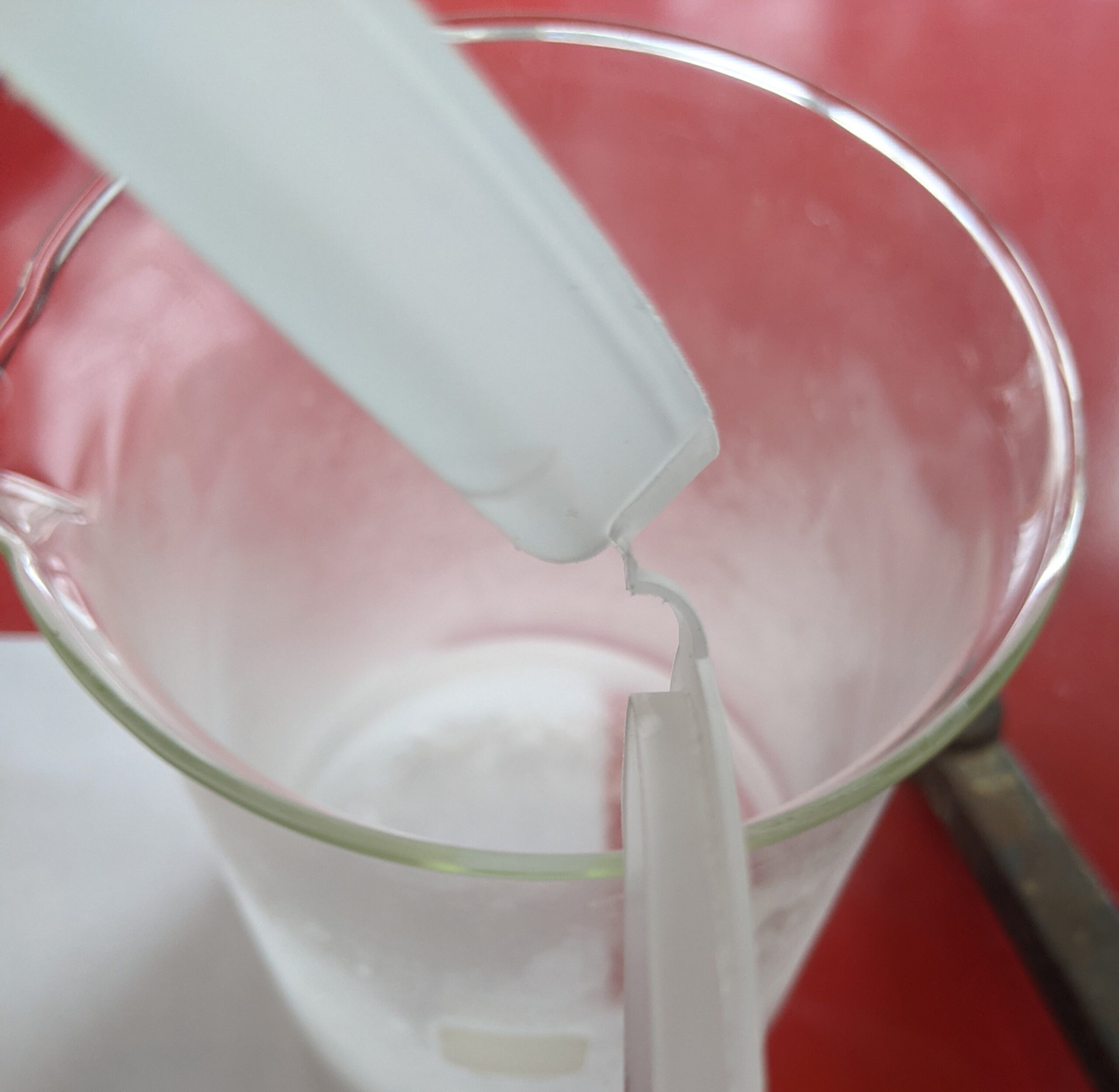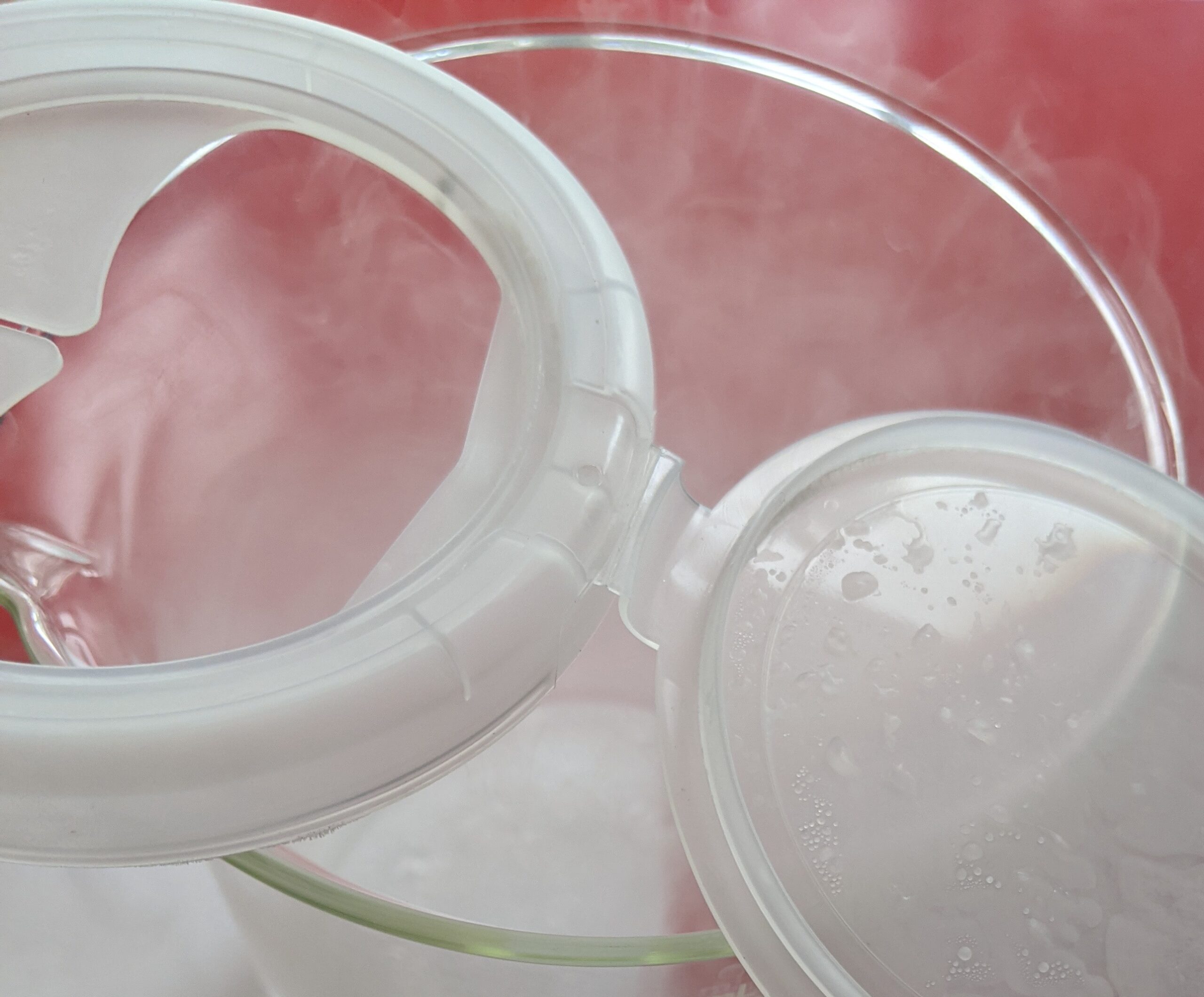This is a preprint of my February column “Cool Fuel” in Cold Facts Magazine by the Cryogenic Society of America.
In the June issue of ColdFacts (V. 36, No. 3 2020) I talked about how we’re learning to be more flexible while keeping our cool (a nod to the pandemic). The fun take away though was the realization that thin film polymer origami bellows could flex 100’s of times immersed in liquid nitrogen without fracturing – my new favorite liquid nitrogen (LN2) demonstration. But it didn’t last long (as my favorite demo that is) due to Francis Dunne, a new PhD student in my lab with years of experience as a Material Scientist with polymer films. Francis soon found an even simpler, easier to get your hands on, and even more flexible cryogenic demonstration that’s becoming my new favorite.
In the aftermath of our origami bellows discovery we’ve tested many polymers and polymer types, coming to the conclusion that geometry is the primary (but not only) reason the bellows survived cycling while cold. Our leading hypothesis was that origami, fabricated from thin films, restricts the change in curvature radii along the fold/crease lines, and thus limits induced strain and stress to the elastic regime. There are two mechanisms we believe that allows this to occur. Snap through buckling seems to allow the adjacent panel sections of the origami facets to flex just enough to allow the necessary curvature of the folds to survive full compression of the bellows. Stretching of the origami facets can also occur independent of snap through buckling as required by the bellows conjecture. But we needed to test this hypothesis in a more controlled way than the complexity of bellows allow.
Enter “living” hinges. Living hinges are a type of flexure hinge between two rigid panels that are made of the same material as the panels but with geometry structured to allow flexure. The living hinge geometry allows for a sufficient radius of curvature to prevent excessive stress and strain in the material similar to origami bellows. Although there are many ways the geometry of this hinge can be structured, we’ll stick with the most basic, known as a “straight” or “flat” hinge that just reduces the hinge thickness until thin enough to flex. For examples, go to your refrigerator or bathroom cabinet. Just about any plastic container with a flip-open lid is now made with a polypropylene living hinge (tooth paste and sanitizing wipe lids seem common in most households). We chose the living hinge on a box of “tic-tacs” to initially test due to the ease of acquiring and the resulting fresh breath of the team.
The figure below is a sanitizing wipe lid, similar to the “tic-tac” box, the living hinge allows nearly 180° (probably more like 165°) of flex between the face and the snap that closes the hinge. We dunked the living hinge in liquid nitrogen and began manually cycling the hinge with an implement (needle-nose pliers). Similar to the origami bellows we found that the hinge survived repeated cycling without failing over a hundred cycles (and still hasn’t broken). To add some rigor to this finding we’ve constructed and automated a flexure hinge test apparatus following an ASTM standard. We’ve also tested multiple manufacturing methods and materials to hone in on the optimum combo for cryogenic use.


Although still early, the mind drifts to new opportunities for cryogenic valves and seals that could be 3D printed or cast at substantially lower cost than currently available. Imagine a flexible polymer transfer line the price of a garden hose. How about we keep things simple and settle on hose and plumbing caps we can leave attached to living hinge collars and get cold without fear of miss-placing? Here’s a video:
What better nod to a pandemic than the cool flexibility of living hinges? Regardless, we need to think of new ways to increase the pace of reducing cost while increasing performance in our field. Even if inspired from a tic-tac box.